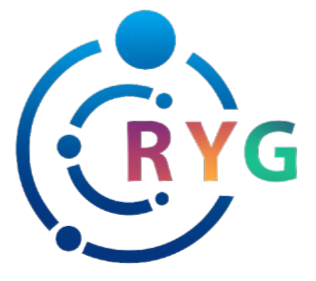
Financial leverage is a strategy that involves using borrowed money to finance an investment or a project. The idea is to increase the potential return on equity by using debt to fund a larger amount of assets than what the equity alone can support. However, financial leverage also comes with risks and costs that need to be carefully weighed against the benefits. In this section, we will explore how financial leverage works, how it affects the cost of debt and the return on equity, and what factors influence the optimal level of leverage for a company. The cost of debt is also used for capital budgeting and valuation decisions.
Prevailing Interest Rates
When interest rates in general increase, the cost of borrowing also increases, and the cost of debt rises as well. Conversely, if the prevailing interest rates are low, companies have the opportunity to borrow at a lower cost. It’s important to remember that the cost of debt effects of shifts in interest rates can be amplified for companies with high levels of leverage. Calculating the after-tax cost of debt is also important because it not only refines WACC for valuation efforts like discounted cash flow analysis but aids in strategic financial planning. This adjustment allows companies to precisely optimize their financing mix, utilizing debt and equity to achieve maximum capital efficiency and enhance shareholder value.

How to Use an Online Tool to Estimate Your Cost of Debt?

Borrowers with lower ratings may find it more challenging to secure favorable loan terms or may be limited to borrowing from lenders who specialize in higher-risk borrowers. Understanding the cost of debt is crucial when it comes to evaluating the financial health of a company or making informed investment decisions. The cost of debt formula helps us calculate the interest rate on debt, which is an essential component of a company’s overall cost of capital. The riskier future cash flows are expected to be, the higher the returns that will be expected. However, quantifying the cost of equity is far trickier than quantifying the cost of debt. In other words, the WACC is a blend of a company’s equity and debt cost of capital based on the company’s debt and equity capital ratio.

Using a business credit card
The firm could use the difference of $105,000 in cash to pay down additional debt or reinvest in the business. Refinancing won’t lower your cost of debt right away but is a long-term strategy. Once you have the total interest cost and your average tax rate, you’re finally ready to use the cost of debt formula. The health of your Budgeting for Nonprofits business finances depends in large part on the cost of capital that your business takes on. By calculating cost of debt, you can figure out not only the true cost of a specific business loan but also whether you can justify taking on that debt given your business’s goals.
- Industries with lower capital costs include rubber and tire companies, power companies, real estate developers, and financial services companies (non-bank and insurance).
- The interest rate is the price of debt, and it determines the cost of debt for the borrower.
- They also use metrics, such as credit rating, to determine an annual interest rate.
- This metric is important in determining if capital is being deployed effectively.
- This tax deductibility acts as a “tax shield,” making debt financing more attractive in certain contexts by effectively lowering the cost of borrowing.
The lower the cost of debt, the more attractive the company is for investors and lenders. In this section, we will explain the cost of debt formula and how to calculate it for financial leverage analysis. We will also discuss some of the advantages and disadvantages of using debt financing, and how to optimize the debt-to-equity ratio for a company. The cost of debt is a key metric that can help a company make better financial decisions. By using the cost of debt formula and calculation, a company can determine how much it pays to borrow money, and how it affects its financial leverage and performance.
- Using the net present value (NPV) method, we can compare the two options and see which one is more profitable.
- In this section, we will explore the benefits and risks of financial leverage, and how to balance them to achieve optimal results.
- In our table, we have listed the two cash inflows and outflows from the perspective of the lender, since we’re calculating the YTM from their viewpoint.
- What are the advantages and disadvantages of using financial leverage and how to optimize it for different scenarios.
- If a business recklessly increases its debt, it may result in financial instability.

The income tax paid by a business will be lower because the interest component of debt will be deducted net sales from taxable income, whereas the dividends received by equity holders are not tax-deductible. The WACC can also vary across different industries and countries, depending on the characteristics and risks of each industry and country. For example, some industries may have higher or lower levels of debt or equity, higher or lower costs of debt or equity, or higher or lower tax rates than others. Similarly, some countries may have higher or lower interest rates, exchange rates, inflation rates, or political stability than others. These differences can affect the WACC of the companies operating in different industries and countries. The cost of debt formula takes into account the tax benefit that a company receives from the interest expense deduction.

Because it tells you whether or not you’re spending too much on financing. It can also tell you whether taking on certain types of debt is a good idea when you calculate the tax cost. To calculate the weighted average interest rate, divide your interest number by the total you owe.
Next, use the interest rate to calculate the annual interest expense per item and add them up. Finally, divide total interest expense by total debt to get the cost of debt or effective interest rate. The cost of debt refers to the effective interest rate paid on the company’s total debt. This value is usually an estimate, particularly if calculated using averages. The amount paid in interest expenses varies from item to item and is subject to fluctuations over time. Knowing your cost of debt can help you understand what you’re paying for the privilege of having fast access to cash.



Leave a Reply